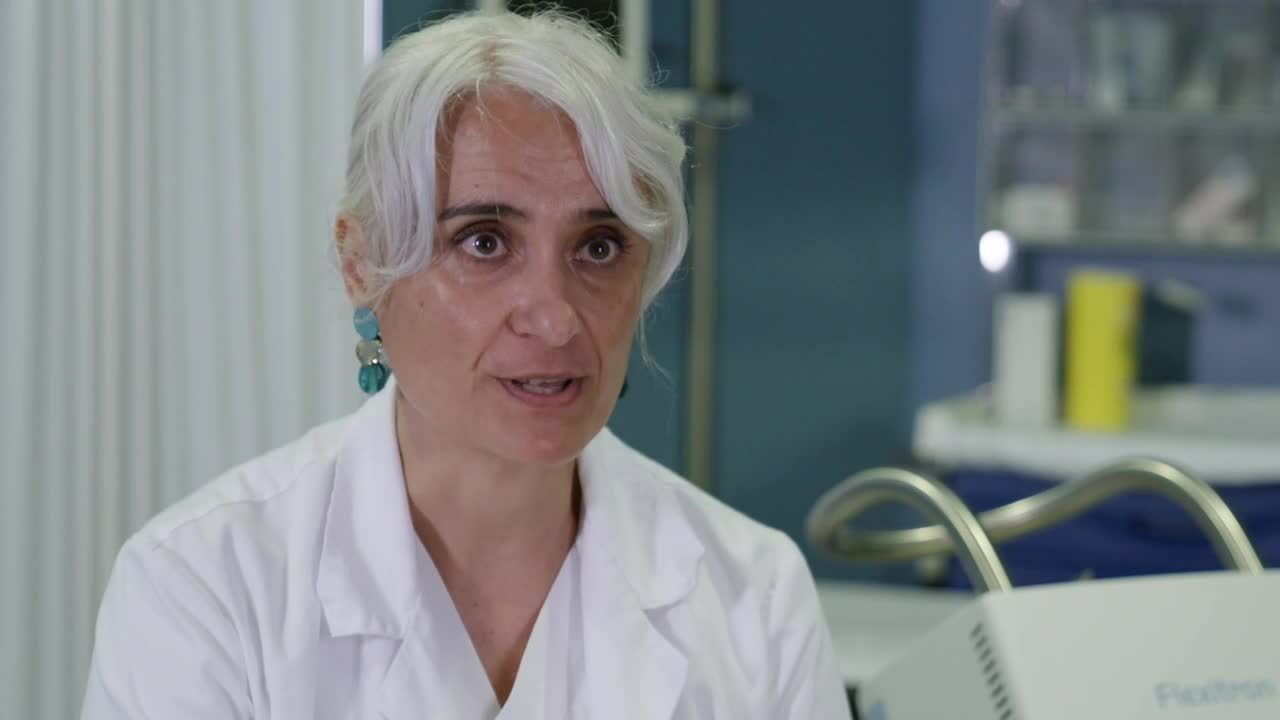
How Doctors treat cancer patients with brachytherapy
Healthcare Perspective
Technician Caietana
Caietana is a radiotherapy technician at Fundacion Instituto Valenciano de Oncologia. In this video, she describes her role in treating cancer patients with brachytherapy.
In her role as a radiotherapy technician, Caietana works every day with oncologic teams and is responsible for assisting physicians in providing brachytherapy treatment to patients. She knows the procedure very well and also understands how nervous patients can be when the treatment starts.
In this video, Caietana tells us all about the brachytherapy procedure and how she accompanies her patients at each treatment session so they can feel safe and confident.

What is brachytherapy?
Brachytherapy, sometimes called internal radiation, is a radiation treatment performed to treat many types of cancer to kill cancer cells and shrink tumors from inside the body. During brachytherapy treatments, the radioactive sources (or radioactive seeds) are placed within or next to the tumor. This method of radiation allows for high doses of radiation to be delivered to a localized area while minimizing the dose to surrounding healthy cells and tissue.
Brachytherapy is most often used to treat cancers but can be very efficient to treat other conditions, such as heart problems, in certain situations. Brachytherapy is typically used for breast cancer, prostate cancer, cervical cancer, skin cancer, and more.
Brachytherapy can be used in combination with other cancer treatments, like chemotherapy, external beam radiation, or hormone therapy. It can also be indicated as a stand-alone treatment following tumor removal to eliminate any cancer cells that may remain.
I am getting brachytherapy treatment: what should I expect?
It is understandable that you or your loved one may be very nervous for many reasons. If you or a loved one is about to get a brachytherapy procedure, be reassured that you're in good hands with a team of professionals dedicated to your comfort and well-being.
The brachytherapy procedure
During brachytherapy, the patient may be asked to lie on a special table and remain still during the procedure. The patient will receive local or general anesthesia, depending on the procedure. Once the patient is comfortable and ready, then Catietana or her team will begin brachytherapy.
The radiation oncologist will insert the radioactive material into the area to be treated, avoiding healthy tissue. This may involve a thin wire, hollow tubes, or other devices. The radiation source will remain in the body for a few minutes, for high-dose-rate brachytherapy, to several days, depending on the type of procedure. During the procedure, the care team will monitor the patient's vital signs, such as heart rate and blood pressure, as well as the amount of radiation being delivered.
The role of the brachytherapy technician
As a brachytherapy technician, a typical day for Caietana starts with the brachytherapy equipment calibration to make sure it is working properly. She also runs further tests to ensure the accuracy of the treatment for the patient. It is essential for the brachytherapy technician to confirm all patient information. The team must also obtain a thorough understanding of the patient's identity, health, and family history, as well as the treatment plan.
They are responsible for managing brachytherapy records and inventory and troubleshooting potential problems with the brachytherapy equipment.

The importance of emotional support to the patient
The technician also provides emotional support in many ways. Caietana is there to answer any questions her patients have about their treatment, it helps reduce any anxiety or fear associated with the procedure.
She explains how brachytherapy works, what are the benefits, and the potential side effects. A brachytherapy technician can emotionally support their patients by providing a positive and supportive attitude throughout the entire treatment process. They do this by actively listening to their patients' concerns and questions, offering reassurance and comfort, and providing an understanding, non-judgmental environment.
As Caietana mentions in the video, when treating cancer patients, she strives to make them as comfortable as possible. She is able to talk with patients and their relatives, providing companionship and support during their treatment. Although they may be laid down in a unit cell, she helps them get into the correct position, and in some cases, even take a picture at their request.
She and the treatment team are dedicated to making the experience as pleasant as possible for the patient. They can also provide emotional support by informing the patient of any available resources, such as support groups, that may be beneficial for them during their treatment journey.
A key actor in the patient's care pathway
Radiotherapy technician's often coordinate with other healthcare professionals, such as physicians and nurses, to ensure the patient is receiving the best care possible. Thus, they also play a key role in communicating with other medical professionals involved in the patient’s care. They may provide support to radiation oncologists, physicists, and nurses during the care journey.
